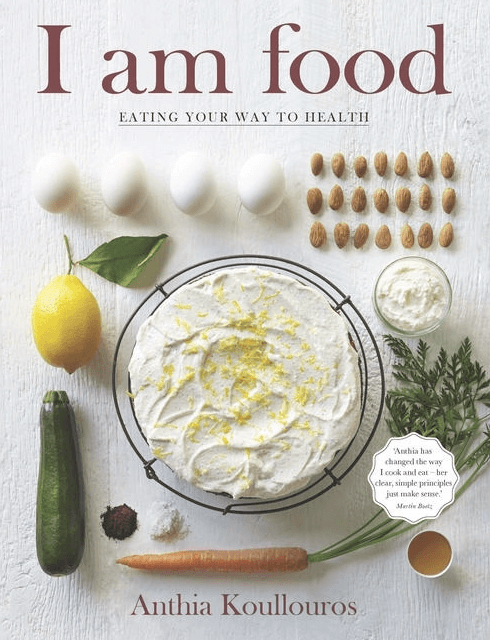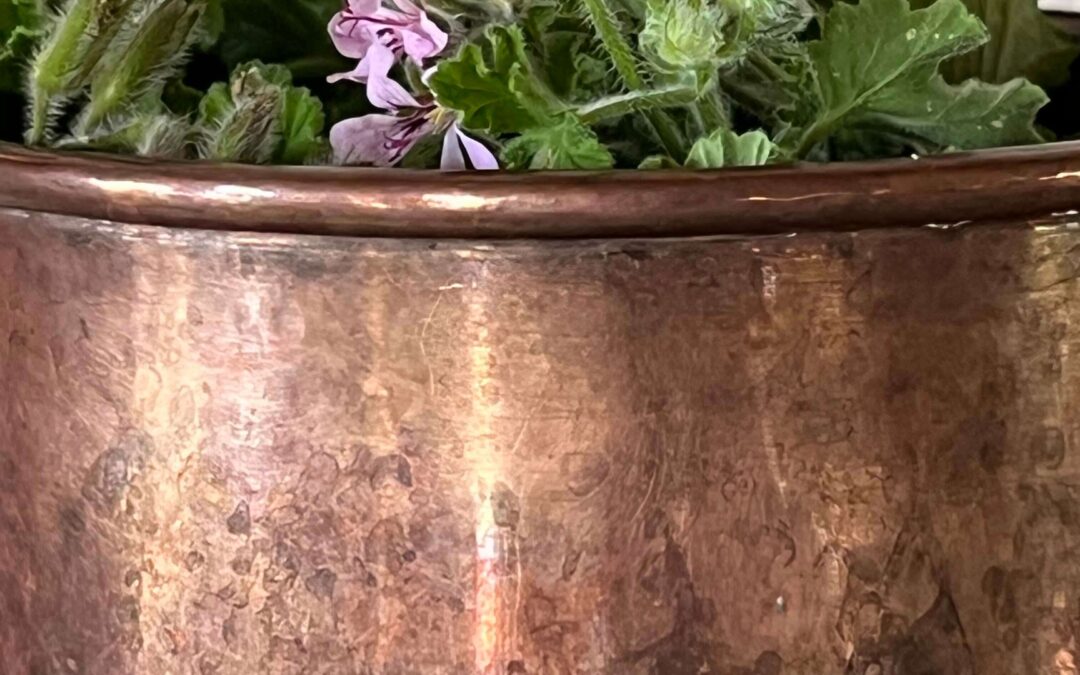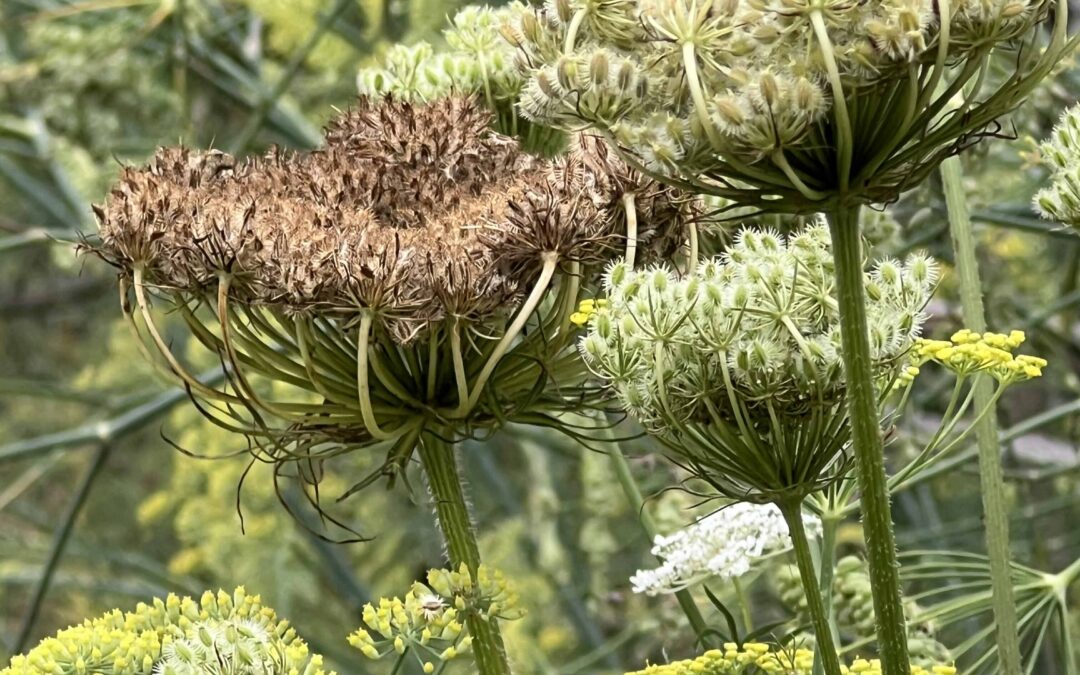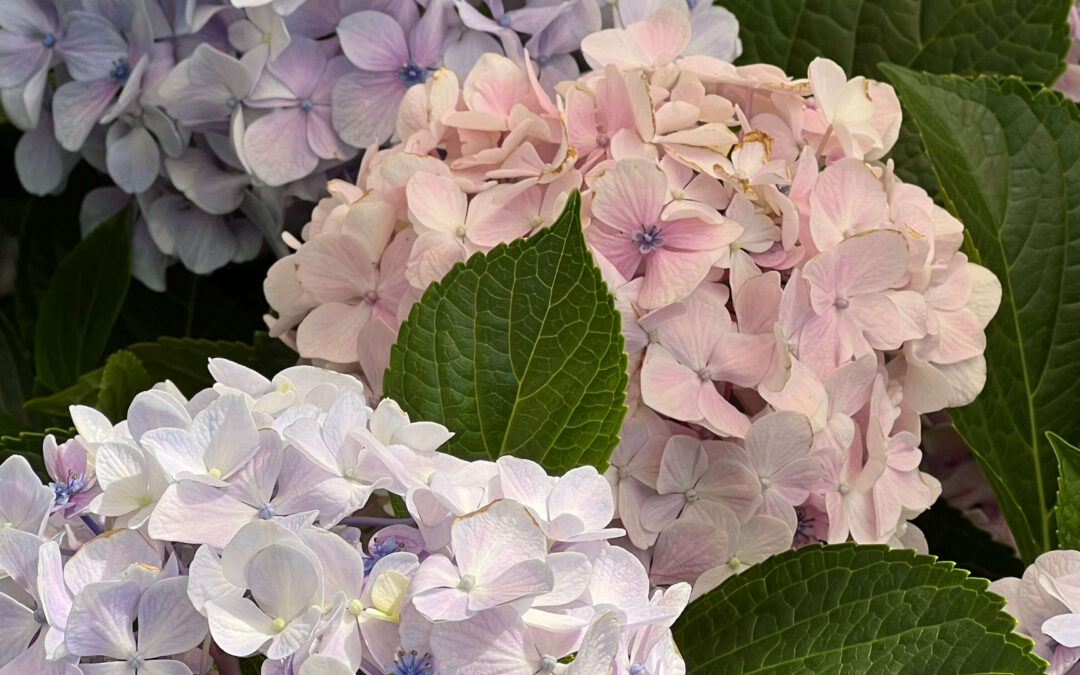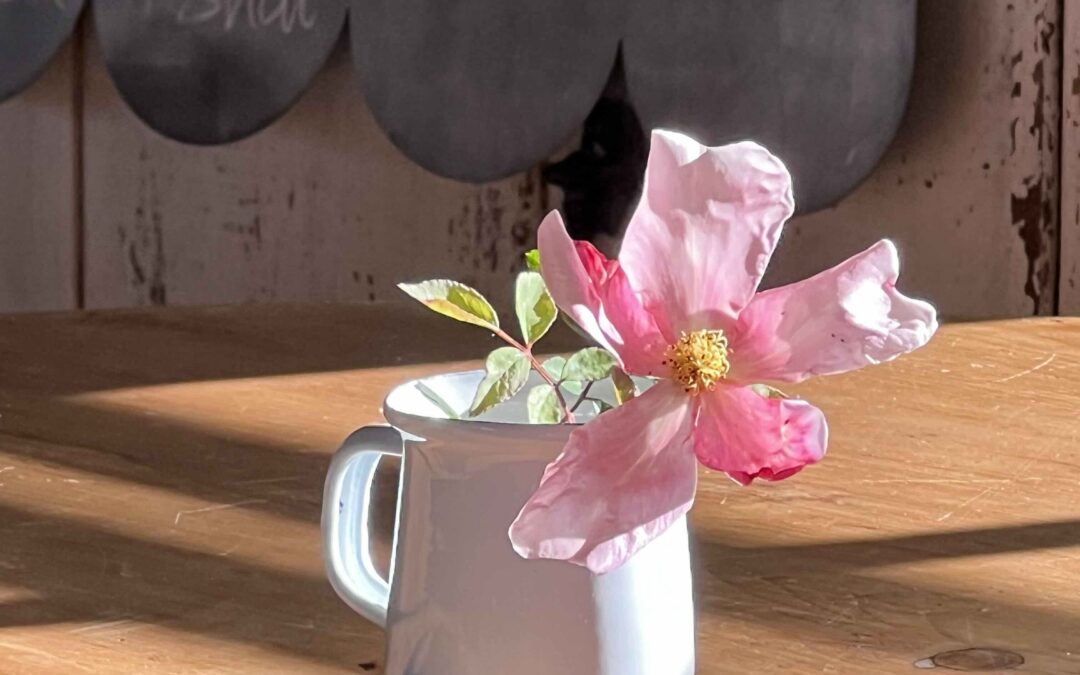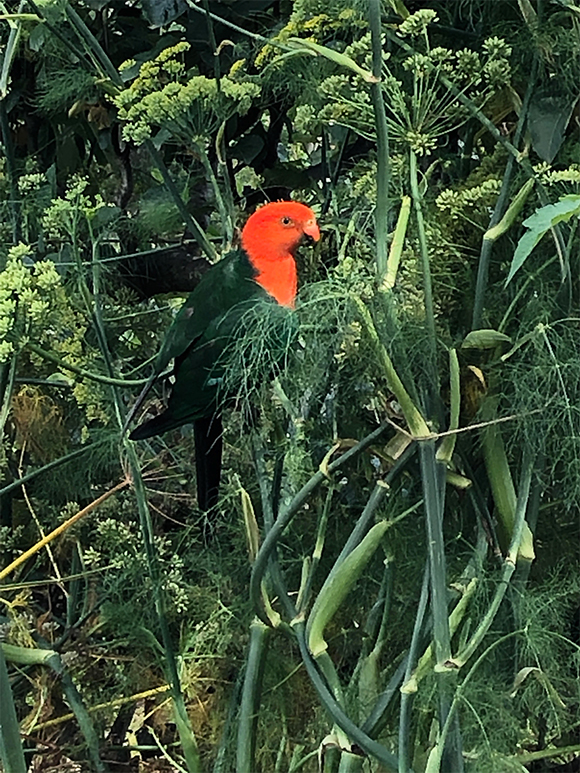
Play Podcast
It’s early January, when King Parrots feast on fennel and confusion runs high….
I do so hope that you too, had a blissful Christmas week and that (at least if you’re in Australia), you also had a chance to slip into a lovely languid summer holiday mode. It’s too short lived, but nothing equals it, to me anyway. Christmas Day itself aside, there are, for once, no deadlines or expectations….even the garden can wait (although really it can’t!).
I decided many years ago that this was a week to down tools. So other than to water, which obviously can’t be ignored, I tend to only carry out urgent, and preferably pleasant tasks. It’s a week of idyllic days for lazy picnic lunches….more often than not, under the Port Jackson Fig down in the corner of the croquet lawn….where from our position of deep shade, there’s a view through the orchard to the borders beyond…and though they’ve run amok by now, for this one week at least, I relish their riotous behaviour!
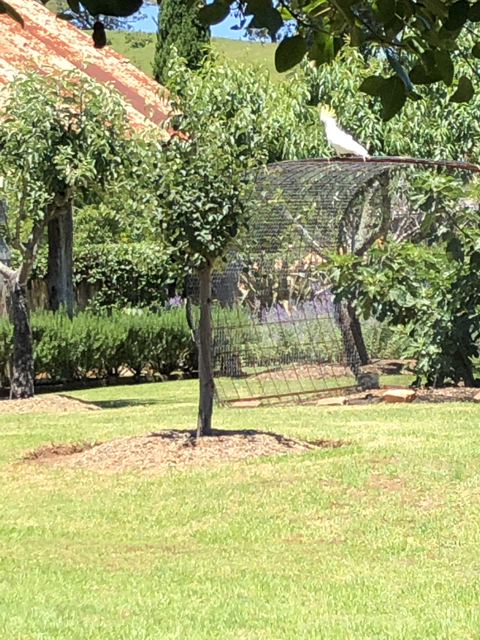
It’s a chance to read….on the verandah, or anywhere in dense shade that may catch the afternoon easterly breeze. To be completely engulfed by the garden, and landscape beyond. And how lucky we’ve been….to have had rain! Still not enough to fill the dams, but the land is green and there is grass where there was none. We’ve been given a reprieve, so we’re counting our blessings, that’s for sure.
And…I think it was rather well deserved after all the frenzied activity of the previous months! Don’t you?
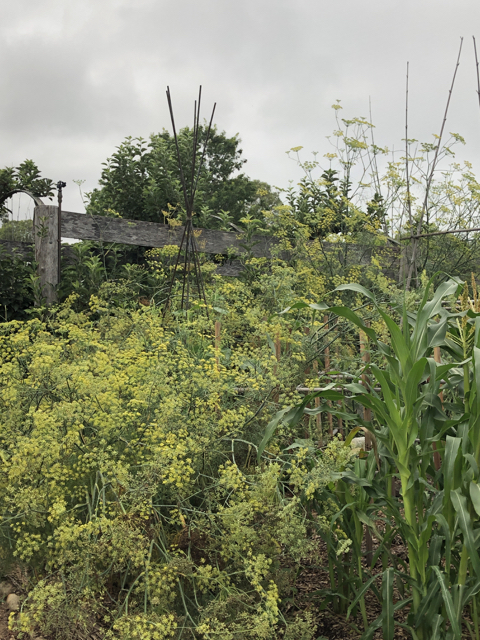
So I mentioned in this episode that the kitchen garden was looking rather wild! Well….in parts anyway, which is exactly what I strive to achieve. But we’re not even half way through summer at this stage, so there’s a long way to go before it reaches peak mayhem!
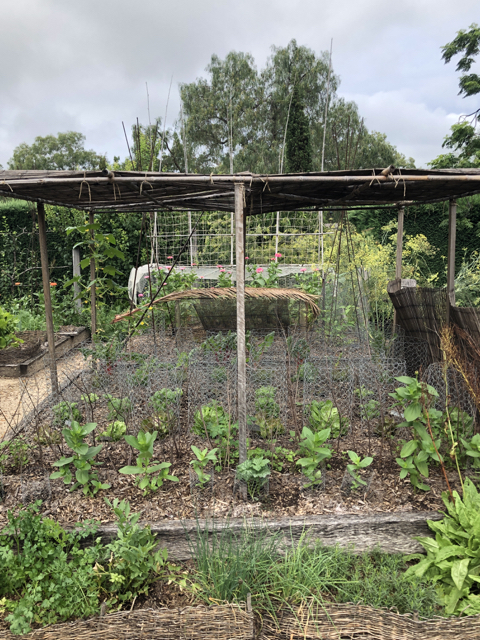
We rolled out the willow panels to cover the supporting structure the first week of December, when the weather forecast suggested hot, sunny days were on the way. Leafy greens like delicate lettuce simply can’t tolerate our hot summer sun, so the only way I can ensure we have them to eat, is to give them shade.

Some of the lovely lettuces that got us through the week of Christmas.

As well as shade overhead, I tied another willow panel to the northern flank, to prevent the plants on the edge of the bed from burning to a crisp. Then, on the most southerly stake, a cucumber vine has scrambled up to reach the canopy above. I’ve taken a new shoot from the base up another hastily tied bamboo rod, so as not to waste any shade the vine is willing to provide, and to get more fruit. I hope to coax it to continue to grow around the edge of the canopy too.
Never mind that it turned out to be an Apple Cucumber rather than the long green European one I expected!
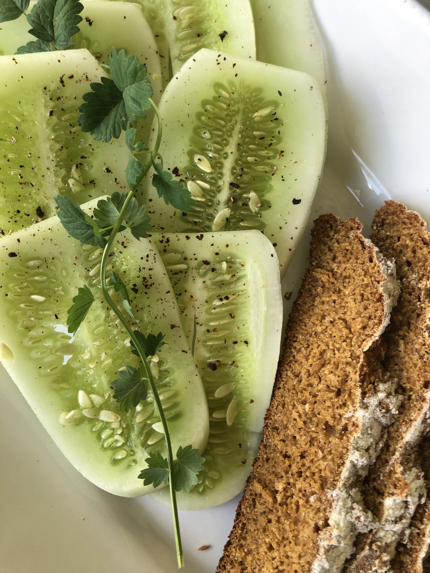
And nor am I going to complain when they’re this good! While we do, just very occasionally, enjoy a very old fashioned white bread ‘soldier’ with a cup of Lapsangsouchong tea…for a more substantial or modern (!!) twist; take a slice of Belinda Jeffery’s Pumpernickel Soda Bread (from Mix & Bake), spread a generous dollop of good old Philly cream cheese and top with a slice of cucumber. Sprinkle with a little leaf or two of Salad Burnet, a twist of pepper and…well….goodness….a little summer lunch doesn’t get much better! Add smoked salmon if you need to beef it up a bit, or cured ocean trout. Then you might want to throw in a glass of wine…a quail egg or two….perhaps even a bowl of garden potatoes scattered with mint, and before you know it, you’ll have a lunch party on your hands!
OK, so….back to the garden….
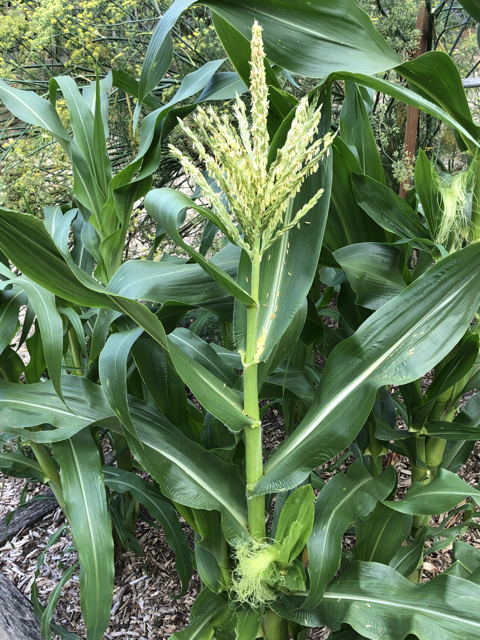
The block of corn is growing more sturdy by the day…..but oh for goodness sake….the flowers and silks are not that glorious shade of pinky red of seasons past……

But instead are creamy yellow! Still beautiful, but they’re the second unexpected surprise of the season!
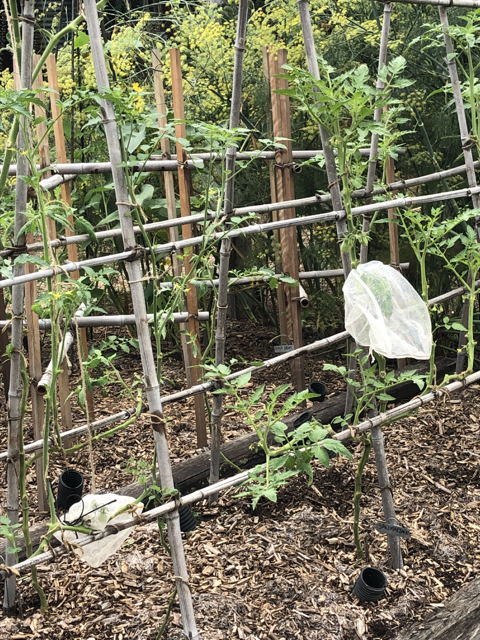
The tomatoes on the tunnel are going great guns now and I’m training them up the vertical rods as well as drawing out laterals, making sure no leaf is touching another, which particularly during this humid weather, helps to prevent fungal disease. I snapped this straight after a cutting-back and tying-in session, so it looks rather bare! But give it a few days and it will be dense with foliage once more and I’ll need to go a-clipping and a-tying all over again.
Having got the plants themselves well established, I’m allowing the first fruit to develop now and as soon as a truss has been pollinated, I’m out with a net bag to tie over the tiny fruit, to discourage both fruit fly and bird attack. It may not foolproof, but it’s pretty much the only option. I’ve tried other bags, but do find these net ones from Digger’s to be the best – they allow air circulation and can be used over and over and over again. Of course – if you’re handy with a sewing machine, you could very easily make your own.

Coral zinnias spill about the base of rusty iron rods where at last, the sweet potato vines are putting on some growth! Once they get underway proper, the sweet potato vine should smother the wigwams as well as send out enough dense foliage to cover the ground. By mid-summer, their growth is usually so rampant, that years ago I decided to try training it vertically to add some height to the otherwise low-growing root veg bed. There certainly seemed to be enough of it that time! Eventually, if all goes according to plan, it should lend a lush, almost tropical element to the summer garden.
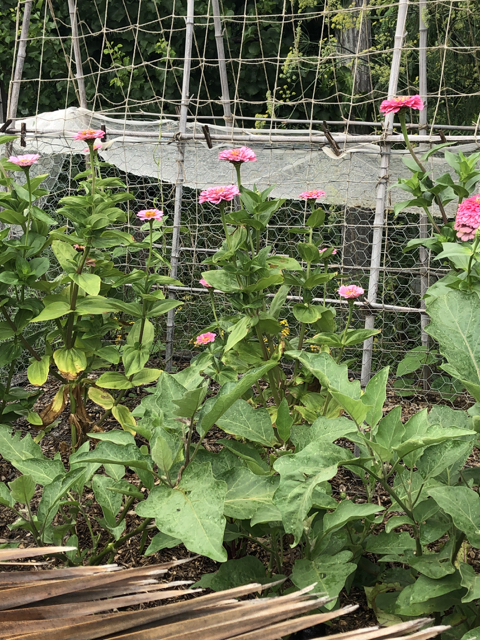
While the legume bed may not be filled with the beans I’d hoped for….well…yet anyway (I’m always hopeful!) the aubergines are trickling in and the row of rosy pink zinnias are making all things bright and beautiful.
Although my intention was to remove the wire wrapped around the tunnel as soon as the newly sown batch of bean seed had emerged and strengthened, the first tendrils have gone and got themselves entwined in it, so there’ll be little chance now of taking the wire away! And the way I feel now, I really don’t care…if only the bower birds would leave them alone! I don’t even dare to remove the net I used to infill the splay of the tunnel for fear of them swooping inside the frame to decimate the beans completely!
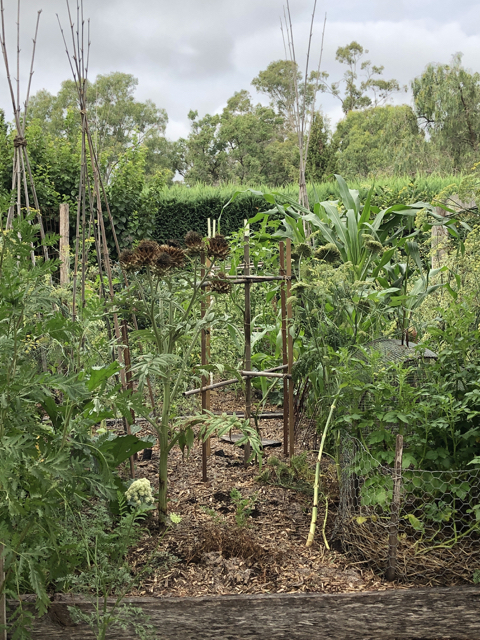
Then over on the guild side of the garden, it’s still a mix of last season and this, which is a fabulous combination. It means I’m making use of the shade provided by those veg that bolted to flower. As they take the brunt of the midday sun, young seedlings can gain strength before needing to deal with full-on exposure.
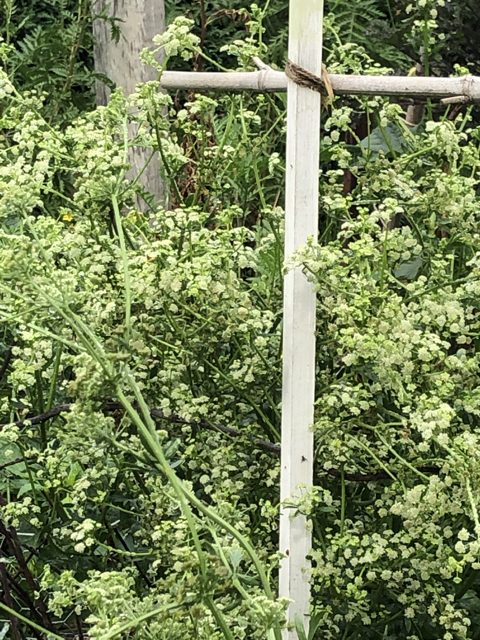
And bolted veg like celery provide not only shade to nearby seedlings, but their flowers also, of course, play host to good bugs. And, I hardly need say but I will….that they look completely and utterly romantic in their wild profusion!
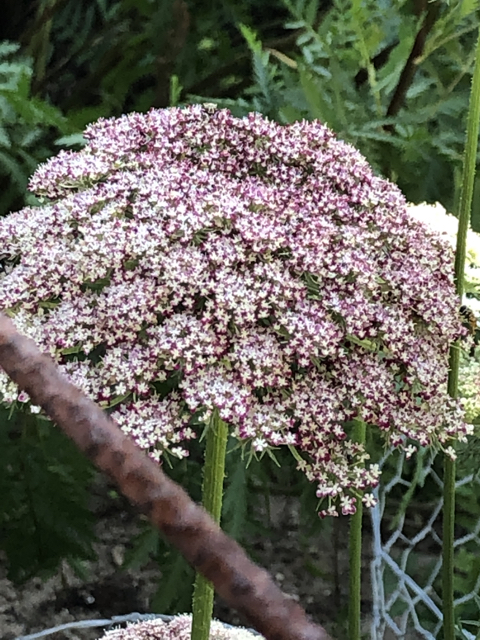
The flower that I am so captivated by this season though, is the purple flowering carrot! It’s new to the garden here and all because Lizzie at Piccolo Farm suggested I take a handful early last year, when I was collecting supplies to bolster my own for the unexpected Great Dixter Cookbook event with Aaron Bertelsen. At the time, I scattered them over a mountain of beans which looked (and tasted) divine, so when I noticed a packet to buy, I thought I’d give them a whirl. And how thrilled I am with the result!
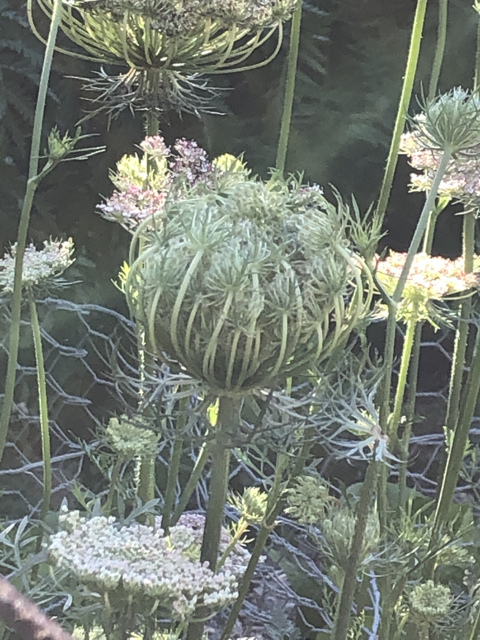
I intend to collect as many seeds as possible from this modest sowing to make a broader swathe next season! And….to sow them close to red kale, where although their proximity this season was unintentional, I can see what a happy combination they would make!
At this moment, they, like all the white ones elsewhere in the garden, are beginning to fold up their stems, making a basket to encase their precious seed. I find the behaviour of carrot flowers absolutely captivating. And each flower too, seemingly hosts families of ladybirds! I think they’re one of the best companion plants of all.
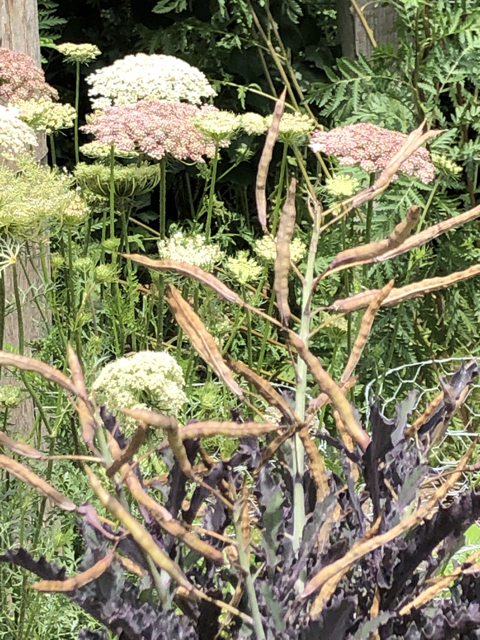
Here are the crowning seed pods of red kale (that I intend to plant closer to the carrots next year, to amplify the colour combination)…..they’re a timely reminder that now is the time to sow brassica seed, if indeed you intend to grow that family from seed rather than buying in seedlings.

While we’re on the topic of seed, I spent some happy hours sorting a lot of it during that lovely holiday week! It’s a good job to tackle when the day is simply too hot for much else. I’m not even going to pretend it doesn’t make a big mess! My aim is to reduce the bulk of material as much as possible, to make the seed more manageable to store, while still leaving as many seed pods as possible on the stem.
I do this because I like to share seed ‘on the stem’ so people can see just where it came from and marvel at each pod and these are the kind of seeds I scatter to grow in a patch, using the first leaves at their tiniest ‘micro-green’ stage – and I find the spent pods act as a useful light mulch at the time of sowing….you’ll see what I mean when we get up to sowing these ones, early next season.
Of course, I could just give them a jolly good shake over the cloth but unlike the poppy heads I showed you last time, these ones don’t spill their seed so neatly. In fact, those individual poppies can have their seed reduced with a relative amount of ease, into a glass jar.
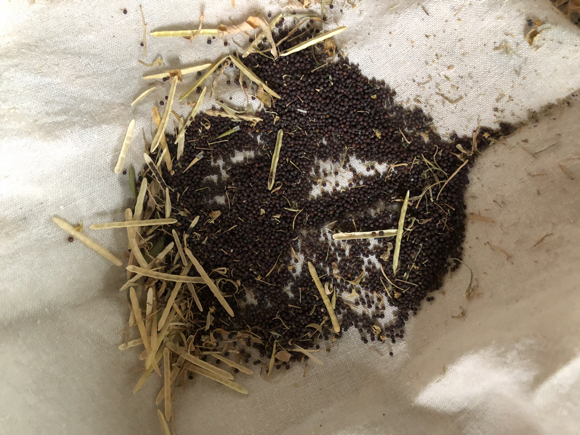
To separate each tiny seed from its case would be the most incredibly fiddly job! As it is, seed goes pinging off all over the place, which is why I heap them first into a big old sheet or tablecloth, and then cut the smaller sections over the cloth as well, to catch any seed that falls from the pods….because by now, they’re so brittle, that much escapes at the lightest touch. (Sorry this image is a bit dark….there was a thunderstorm brewing outside and it was dark!).
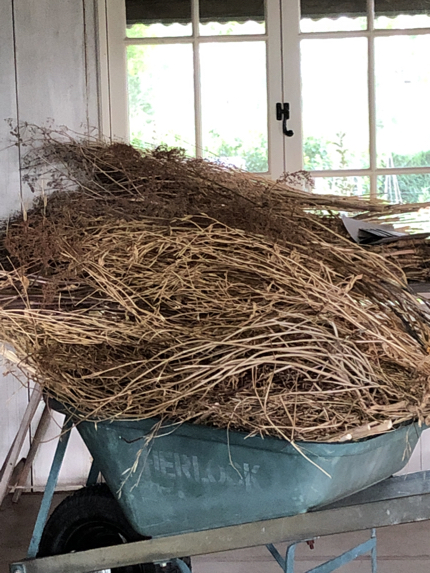
When I’m done, I’ve reduced the size of my collection so it fits into saved shopping bags. Reducing the amount of material from a barrow….
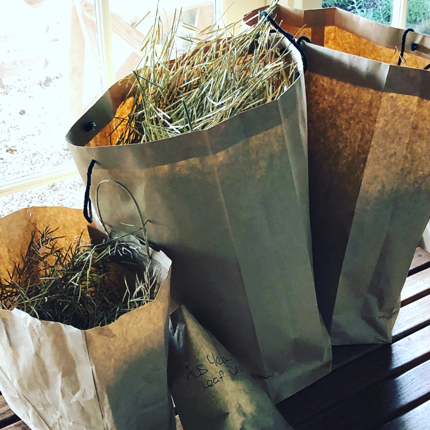
To something I can store in the cellar! These particular seed are of rocket, the mustard leaf ‘red elk’ and the smaller bag of ‘giant red’ mustard. The tiny bag has seed of the Australian yellow leaf lettuce.

I spent another hot morning in the cool of the Dairy sorting through the onions. They just weren’t drying out as quickly as they usually do, so in the end, I decided, as I had with the garlic, to cut off their yellowing (but not drying in a hurry) leaves and upend them in an upside down wire basket. This way, they have good air circulation all around, and I’m hopeful their shells will dry out more quickly now.
Where the red ones are concerned, at least I use them up early in the season, so they don’t need to be stored for quite as long as the brown which I like to have on hand all the way through. Not quite yet, but very soon, we’ll enter the season of one of our favourite late summer dishes, Sicilian Caponata, which calls for red onions.
You’ll find the recipe in a new book that’s due out very soon – in time to catch the Caponata season! Its the recipe I chose to contribute, when invited, to The Farmer Cookbook, because the ingredients coincide with the book’s expected release date, so if you get hold of a copy, you can get stuck straight in and make it! Proceeds raised from the book will go straight to farmers, who are still doing it tough: just because there have been a few storms and a bit of rain doesn’t mean for many, that they’re out of the woods yet.
I’m looking forward to seeing a copy – a fabulous creative team were at work pulling it together behind the scenes and they photographed the ‘finishing’ shots here one Sunday. While they worked away at their craft, I was in a gardening frenzy, during that time of full-on crop rotation! Sure they probably thought I was bonkers….

The upside-down trick worked a treat with the garlic that was also being slow to dry….
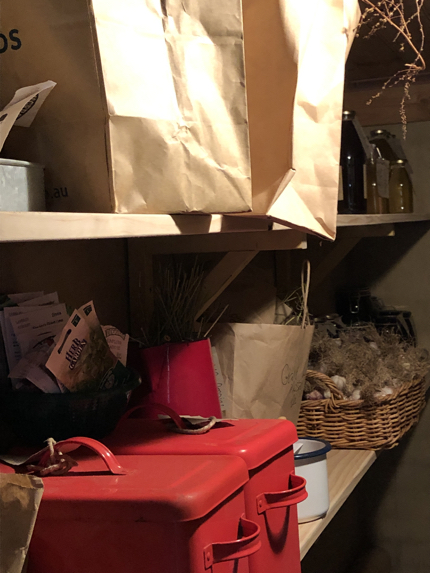
And it’s stored down in the cellar now, along with the tins and bags, the jars and pots of seed, along with bottles of cordial and jars of jam. If only I’d known how much space I’d need underground when we built the new part of the house all those years ago, I’d have made the cellar the same size as the kitchen! But we’ll talk more about seed and the cellar another time! Because this little tangent isn’t over yet…..
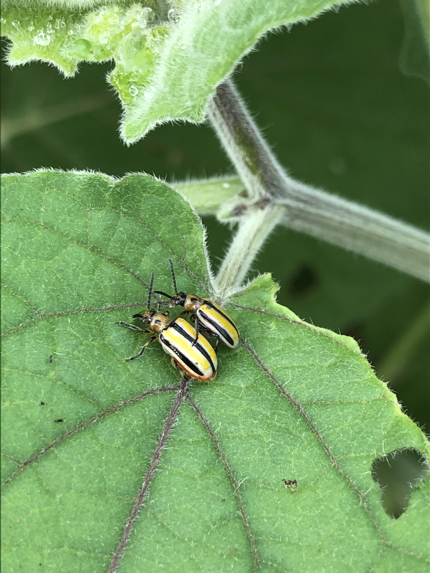
So here they are….and not one but two! My new target! After pointing them out to Thalia and getting her ‘poo bug’ response (no…I haven’t photographed that bit!), it piqued her interest enough to discover their real name: the three-lined potato beetle! And now I’ve gone a-googling, it would appear they seem to come in a different shape, size and colour, depending on what country you’re in. But regardless of colour, they all do the same thing – and the ‘poo bug’ description is very apt. If you have children who love such things, do go a-googling yourself!
It appears that some people also have problems with them on their tomatoes (which would make sense, as they’re part of the same Solanaceae plant family)…let’s just hope they’re content with the one Cape Gooseberry here! On one plant, I can deal with my morning squashing process and another little effort in the evening, but they do seem to multiply at a rate of knots. You have been warned!

And here’s the very first Cape Gooseberry flower for you to see! It’s opened since I began writing the notes, so you really are right up to date with the goings-on in the garden here! This is so very exciting, but do just look at the colours….not for the first time I notice that plant and predator share something in common….colour, stripes….clearly they go hand in hand. Mother Nature certainly works in mysterious ways.
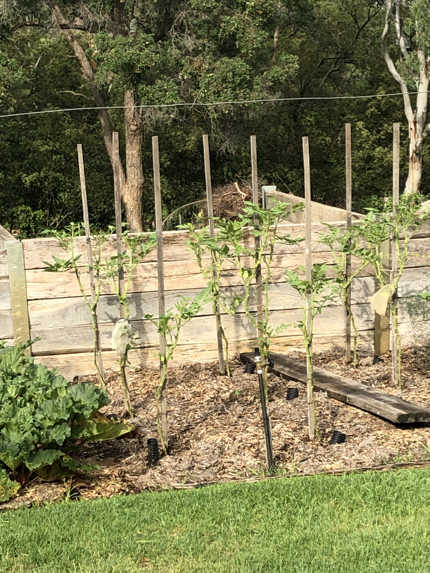
Down the back, the main crop San Marzano tomatoes are well under way now with strong central stems, so I’m allowing them to fork into two or three branches once the foliage is well up away from the ground. They’re setting their first fruit now too.
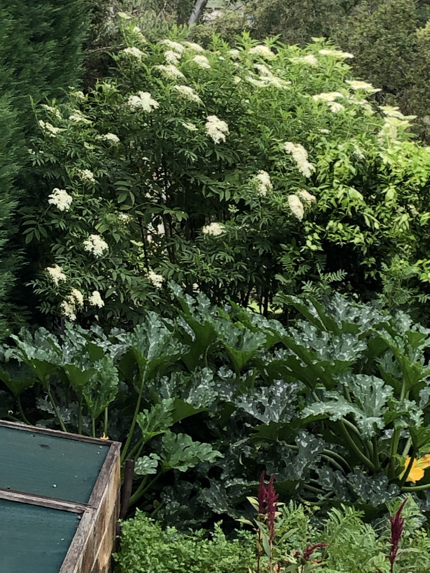
The zucchinis have lovely strong, healthy leaves and are producing fruit in abundance. The elder behind, carries yet another flush of pretty white flowers.
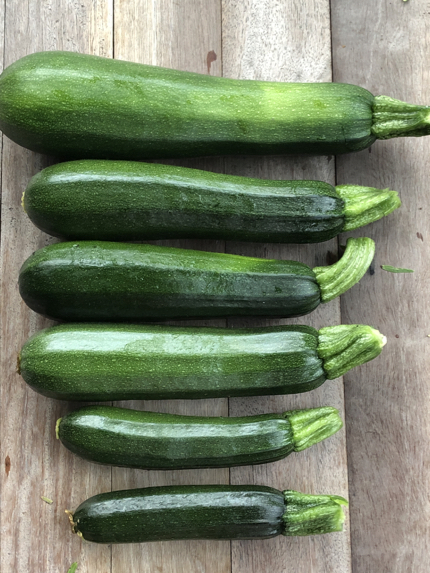
And beware your zucchinis….they can go from modest to marrow in the space of a day, given the right conditions! The top one is a very sober size compared to the one I picked a couple of days ago!

Also down the back, I picked the first haul of fresh parsnip seed in a panic before another thunderstorm! These seed heads are heading to Lizzie at Piccolo! Incidentally, Lizzie is going to bring some of her produce and her edible flowers to sell at our open garden in November….there will be more about that coming up soon…
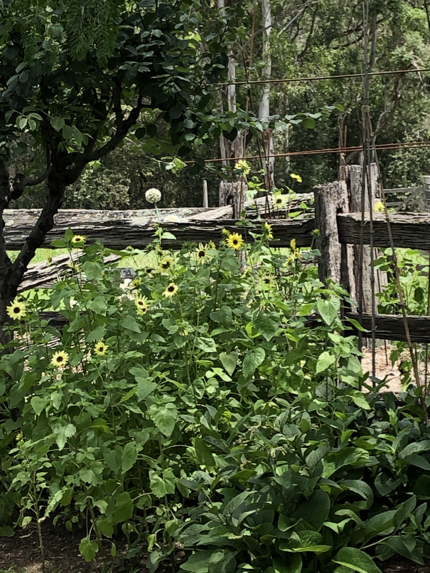
Italian white (really?) sunflowers making such a pretty sight down the back, next to the aerobins. I’ve been sowing their seed here for years but this is the first time they’ve come up of their own accord and it’s the best display ever. Sometimes, encouraging the most simple delights can be the hardest to achieve. But I’m thrilled with this effort. And I’ll say it again if I say it a thousand times…what happens down the back is every bit as enthralling as what’s going on up the front!
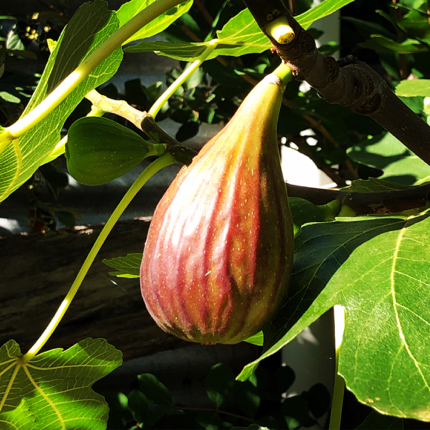
Elsewhere, this is one of the huge figs that heralds the start of fig season. Fruiting on old wood, the main crop will be weeks away, but occasionally a tree produces one or two of these early beauties that are, hopefully, a taste of things to come. There’s a name for these early figs and I’d tell you what it’s called, but the computer won’t let me type its name! Put the letter B in front of the word reba and you’ll have it!
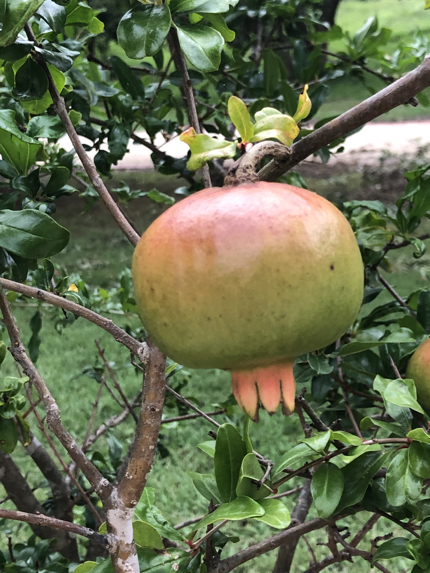
Pomegranates are forming on the little hedge in the park. I know we’re really too humid to grow them, but we fluke a beauty from time to time…that is, if the Sulphur Crested Cockatoos don’t get there first!

Bags of grape are tied all around the house verandah. The task began twelve days before Christmas, but it’s a time consuming one, so I had another session during that quiet week, when on a desperately hot morning, this, at least, was a task I could complete in the shade. The bower birds are not stupid though, and have become adept at pecking holes through the bags. I wish they’d at least wait until they’re ripe!

I forgot to mention the Jerusalem artichokes during the episode…but you can see them streaking ahead in this image to the right of the hydrangeas…they grow in a clump right outside the kitchen and I would expect, by the next episode, that they may be a great deal taller, and perhaps, even coming into flower.
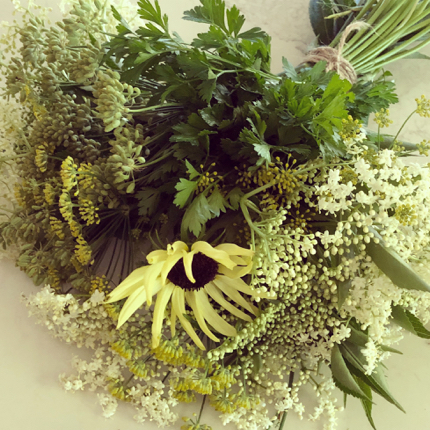
So….to the tangent topic, which I chose for this episode to be about ‘raised’ versus ‘in-ground’ kitchen garden beds; and promised to let you know of some of my favourites that have their roots very firmly in the earth. Without getting too carried away (hmmmm I hear you say) because honestly, once I start I could probably write a book if I were really to set off down this path! I’ll list just a few that I have found to be particularly inspiring over the years. They’re all well established and accessible to the public even though they’re scattered around the world.
But even if you can’t visit in real life, reading about gardens is a tantalising way to learn…and yearn….which is a state to make you work all the more hard at your own!
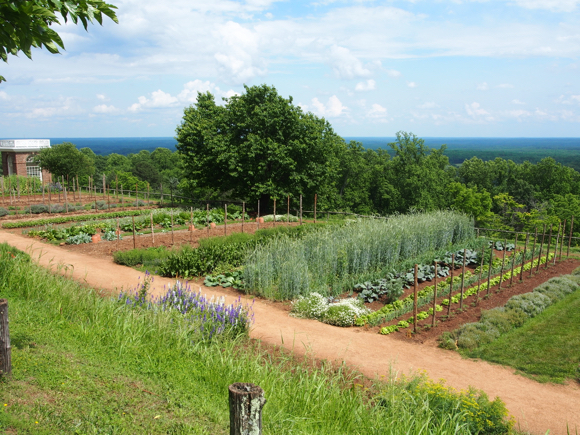
It took me almost 30 years to visit Monticello, but in the intervening years “A Rich Spot of Earth” by Peter J. Hatch was published and is filled with so many images and so much glorious information, that even if you never make it there, in delving into this book you will grasp a deep understanding of the methods that underpin the Jefferson garden as well as its place in the landscape.
“A thimbleful of lettuce should be sown every Monday morning” is a good bit of advice from Thomas Jefferson that we all, as kitchen gardeners, should heed (though a thimbleful may be a tad overdoing it for our mostly modest gardens by comparison!). It’s a good reminder that successional sowing, if you want a constant supply, has been a no-brainer for a very long time indeed!
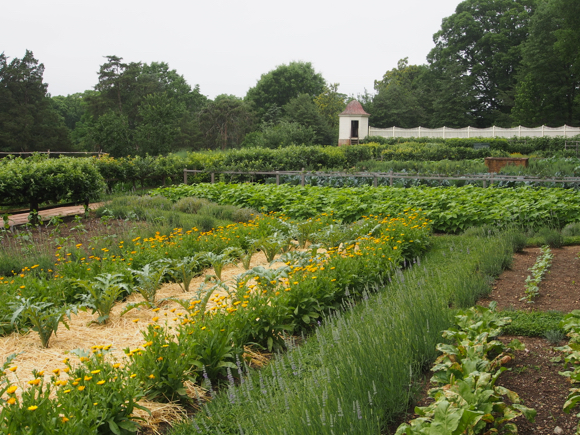
The reinterpretation of George Washington’s garden at Mount Vernon is altogether more decorative than Jefferson’s at Monticello, and as compelling for its ornate layout as the Jefferson one is in its ‘experimental’ simplicity. They are two of the most exquisite kitchen gardens you can imagine.
I can see that narrowing this down to one image per garden is going to be a bit of a struggle…I wish I could take you to see them!
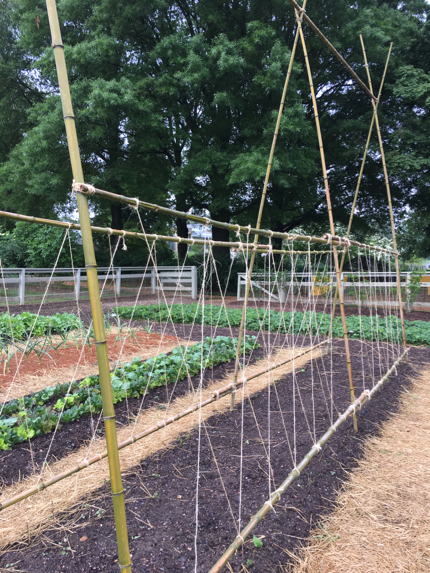
While we’re in the US of A, the immaculate kitchen garden that exists within the extensive ornamental gardens and park at Longwood contains a multitude of structures and methods for training that are simply eye-popping!
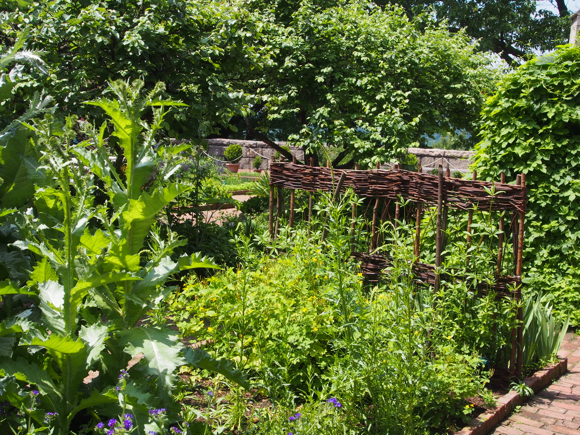
The medieval style gardens contained within The Cloisters in the New York Bronx, are an intricate medley of ornamental, medicinal and edible plants. Any one of the courtyard gardens here yields enough inspiration for any urban plot (and plenty of those willow structures I’m so fond of!).

I’m kicking myself that I only took a short video, rather than a ‘still’ shot of the organic market farm laid out on a gentle slope at Stone Barns Blue Hill Farm . Much can be gleaned from a beautifully maintained organic market farm, which this one exemplifies. Its little educational plots though, are well and truly within the realm of the home gardener.
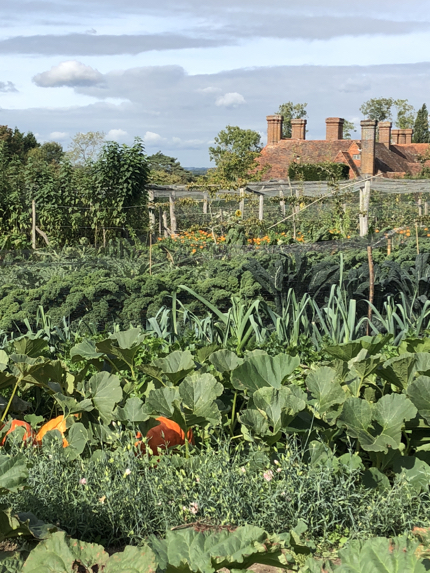
The kitchen garden at Great Dixter simply is, my idea of the perfect kitchen garden! On a serious scale of course! Lovingly planned each year and tended by Aaron Bertelson, with row after row of every veg you’d expect, interspersed with flowers for the house (a tangent and topic I want to dwell on another time) and cages for soft fruit. You will learn as much about how Aaron plans and works the garden as how he cooks from it, in his Great Dixter Cookbook.
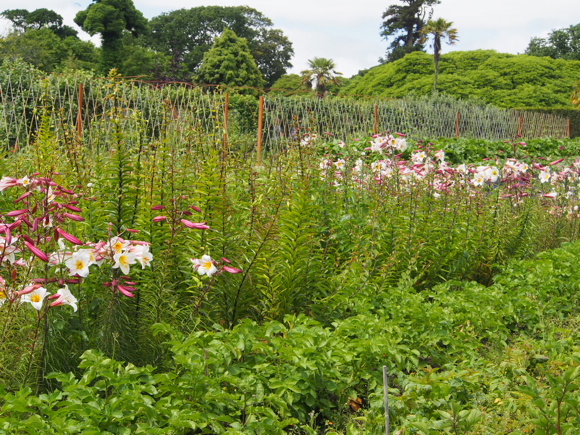
Another, that is absolutely breathtaking to wander, wonder and marvel at are the kitchen gardens at the Lost Gardens of Heligan. Throw in the hint of seaweed brought in from the shore as a mulch for an unexpected olfactory whiff, but do expect to be enchanted by rows of lilies and snapdragons, and a backdrop littered with palm trees…..
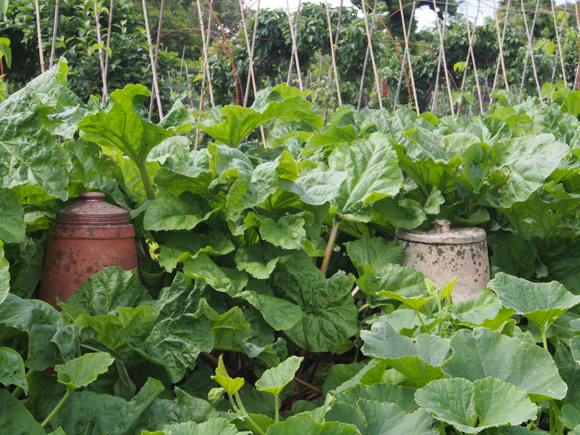
Along with the magnificent and moving story of the gardens and their long lost workers.
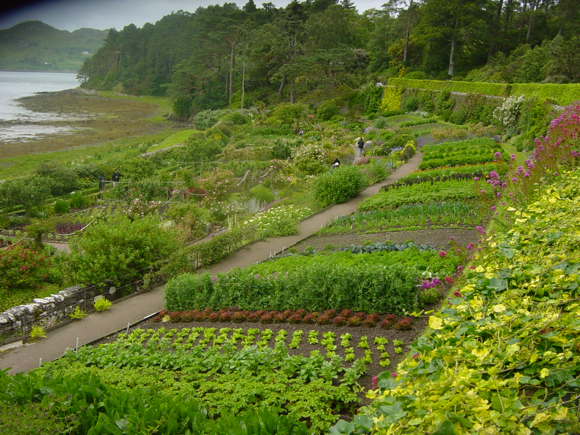
While we’re in the wake of the Gulf Stream, the situation of the kitchen garden at Inverewe, on the west coast of Scotland, is one I find intoxicating! If you follow the right path, you’ll discover a gate in the garden wall, direct to the loch shore…how romantic.
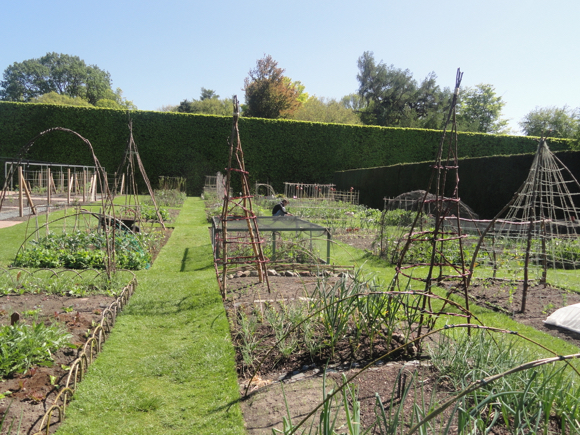
Inspiration for all can be discovered in any one of the modest horticultural student plots at Edinburgh’s Botanic Gardens.

The kitchen garden at Chatsworth is an absolute classic, of course…..it’s utterly enchanting.

But I also remember being enthralled to find, in another pocket close by to the traditional beds, that they were practicing the guild method too….mixing and intermingling their plants, and had a very fine example indeed.
Then on a different kind of whim altogether…
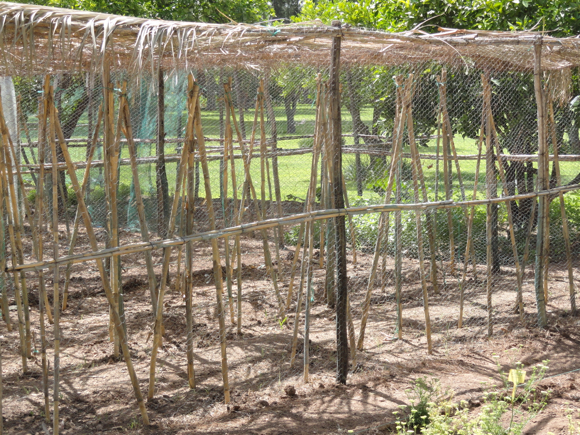
For our hot dry climate, we really ought to look to the hot dry gardens of Morocco, where there’s much to be learned! Can you imagine how excited I was to discover my single shade structure in multiples when I stumbled across this a few years back? But there is even more to be gleaned from this image: at the rate of bird attack here, I may yet be reduced to wiring in the entire garden!
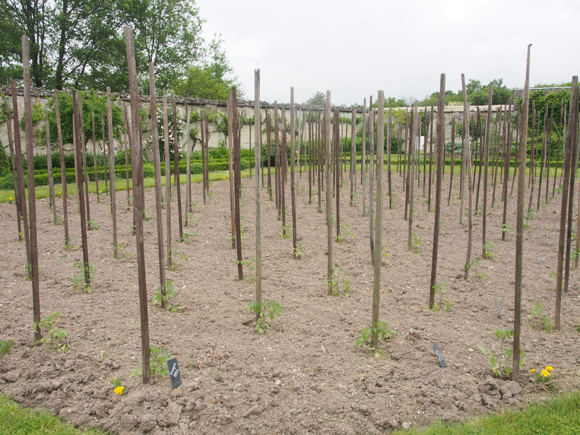
A virtual sea of traditionally staked tomatoes at the Château de La Bourdaisière in the Indre-et-Loire region of France. How I would love a visit to coincide with their Festival de la Tomate!
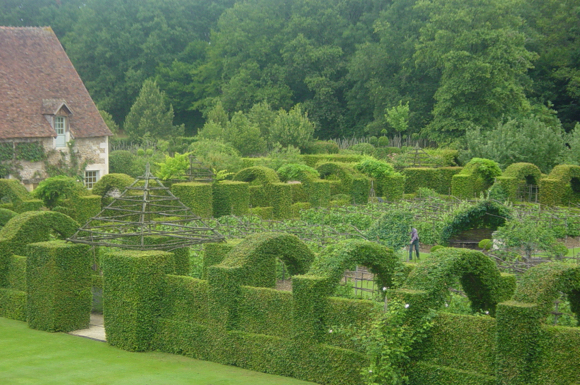
My favourite gardens on earth are those of Le Prieuré Notre Dame d’Orsan, located in the Berry region of central France (that was, until architect owner Patrice Taravella was engaged to design the gardens at Babylonstoren – see below, so now my heart is torn!). Along with Sonia Lesot, some thirty years ago, they restored the buildings and set about also creating a medieval style, monastic garden. While geometric in layout, it has an air of informality; and every detail is utterly exquisite.
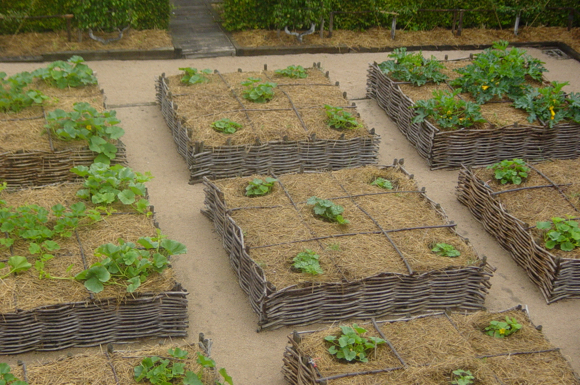
While much of the extensive and mostly edible gardens are rooted firmly into the ground, if ever there were raised beds to inspire, surely it must be these!
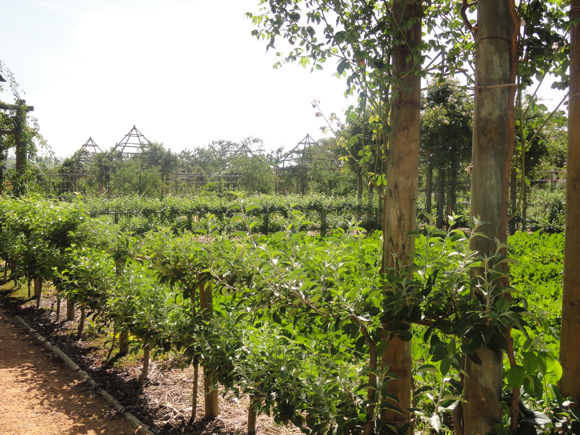
There is no single image that can possibly do justice to the magnificent edible gardens at Babylonstoren situated in the Stellenbosch wine growing district to the east of Capetown SA. Also designed by Patrice Taravella, I’ve only been there once and although in its infancy then, already the examples created and methods implemented were almost bewildering. It’s a garden (verging on the scale of a farm) that I simply long to return to for pure inspiration.
I’ve long been captivated by ancient irrigation methods, but this is the only modern garden that I’ve seen, that has had such an extensive system of rills and sluice gates implemented. Swoon….
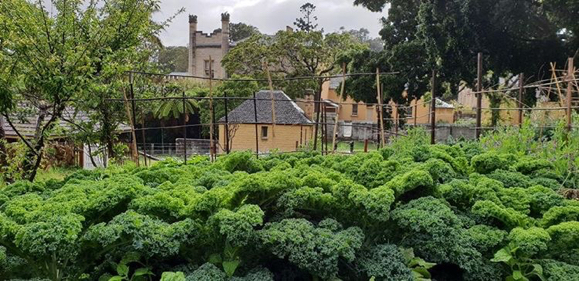
But I’d like to end with my favourite kitchen garden of all on home shores and that’s the Kitchen Garden at Vaucluse House, in Sydney. Lovingly tended by the Sydney Living Museums team, led by Anita Rayner, it’s situated in a little realm of its own. While I know I over-romanticise this garden, I just can’t help but think how amazing it must have been to live in that situation in the early days of the colony, with a view to Parsley Bay but in the lee of the ocean, where the gap between that spectacular salt-laden entrance to Sydney Harbour, the Heads; ignites a deep sense of likely adventure on the horizon, oh so close by.
The kitchen garden at Vaucluse House is worked using traditional methods, is a joy to spend time in and you can’t help but learn something each time you visit. It’s somewhere I like to take visitors, so tend not to take garden photographs…I’m clearly overdue for a visit all on my own, because this lovely image, is Anita’s!
Of course, this collection is simply the tip of the iceberg, but the one thing they share in common, is that they all have their roots very firmly in the earth. Hopefully these will provide a little something other than the kitchen garden here, to inspire you at this beginning of a whole new year…to encourage you down a rabbit hole or two of exploration!
But for me…remember a couple of episodes ago I told you about Alex, who completed his horticultural apprenticeship here? Well, he and his lovely girlfriend Eliza are on a journey of a lifetime….they’ve been interning at market farms across the globe and I just know that by the time they return (or perhaps I should say if they return!), they will have soaked up an adventure’s worth of knowledge. I haven’t told them yet, but I’m thinking they might put together some images, and talk us through comparisons they’ve drawn about growing, and ideas old and new, because they’re both great advocates for soil health and seasonal organic produce, and by the time they return, will have absorbed some of the finest practices in the world. What a thought! There’s always so much to learn.
In the meantime, I wish you a very Happy New Year and given this episode is running a week behind, the next one will be just around the corner! Yikes!

| Going, going…… | asparagus….otherwise, last season’s produce really is now gone! Apricots were few but more peaches are on the way. |
| Eating…. | zucchini, cucumber, aubergines, the very first tomatoes, lettuce, coloured chard, beetroot, potatoes, rhubarb, strawberries, fennel fronds and buds, sorrel, salad burnet, lovage, chives, French tarragon, parsley and surprise tiny rocket leaves that emerged thanks to all the seed that spilled during collecting. Basil. Would that we were eating beans – we SHOULD be! |
| Sowing seed of…. | brassicas, beetroot, carrot, lettuce, basil Genovese, more parsley and heaven help me…more beans! think I should try an early sowing of fennel for bulbs. |
| Planting seedlings of… | it’s really too hot to plant now. |

